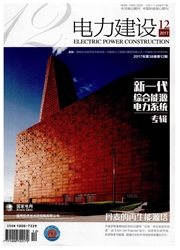

 中文摘要:
中文摘要:
随着储能技术的发展,储能站在电力系统中的建设与应用具备了基本条件。随着我国电力市场迅速发展,越来越多的供应商参与到配电网侧寻求利益分配。为了均衡配电网运营商和储能站投资商的利益需求,该文以配电网拓展规划和储能站接入为规划场景,提出了考虑储能站投资收益的配电网双层规划模型。上层规划模型以配电网线路建设成本最低为优化目标,实现配电网运营商利益最优;下层规划模型以储能站通过"低储高发"获利最高为优化目标,实现储能站投资商利益最优。以一个小型配电网系统为算例,通过遗传算法求解上层规划模型完成配电网线路规划,并通过下层规划模型进行储能站的选址定容。仿真计算结果表明,在提出的运行策略下,储能站投资回报率与储能站所接入节点的负荷特性密切相关:负荷峰值越高,峰值持续时间越长,接入储能站获得的收益越高。
 英文摘要:
英文摘要:
With the development of energy storage technology in worldwide, the construction of energy storage station (ESS) is becoming realizable and convenient in power system. Moreover, with the fast development of electric market in China, more and more suppliers become positive participators in distribution network side for the distribution of benefits. In order to balance the benefits of electricity distribution utilities (EDU) and investors of energy storage station (IOESS), this paper takes the planning expansion of distribution network and storage station access as the planning scene, and proposes a bi-layer planning model of distribution network with considering the income from investment of ESS. In the upper layer, the optimization objective focuses on the lowest construction cost of distribution network to achieve the best interests of EDU. In the lower layer, the optimization objective focuses the highest profit of ESS through 'low storage high generation' to maximize the incomes of IOESS. Taking a small distribution network system as an example, this paper solves the upper layer planning model by genetic algorithm to complete the line planning of distribution network, and determines the location and capacity of ESS through the lower layer planning model. The simulation results show that, the return on investment of ESS is closely related to the load characteristics of its access node under the proposed operation strategy ; the higher the peak load value and the longer the peak duration, the higher the profit of ESS.
 同期刊论文项目
同期刊论文项目
 同项目期刊论文
同项目期刊论文
 期刊信息
期刊信息
